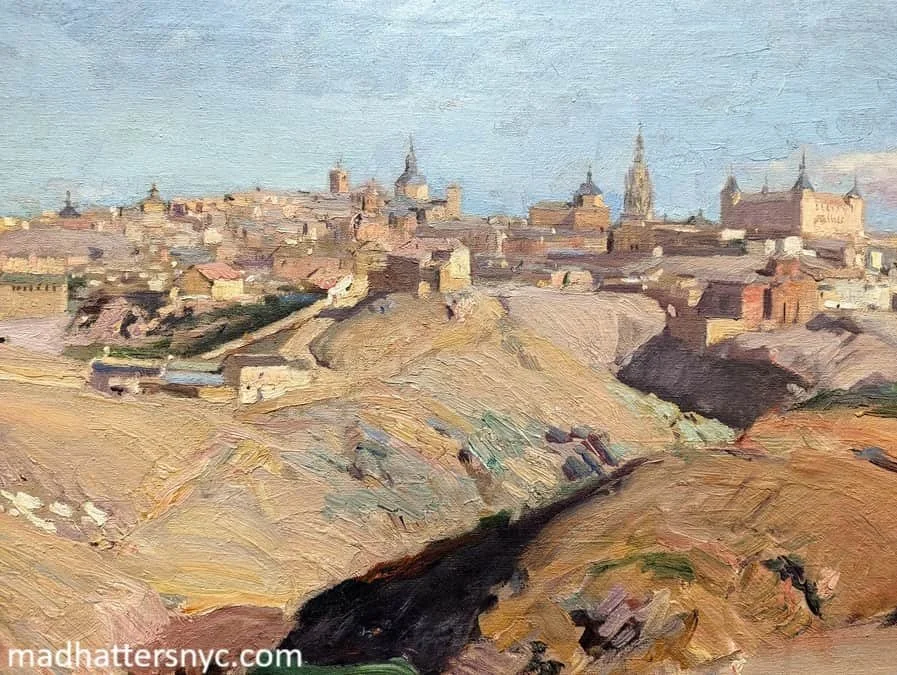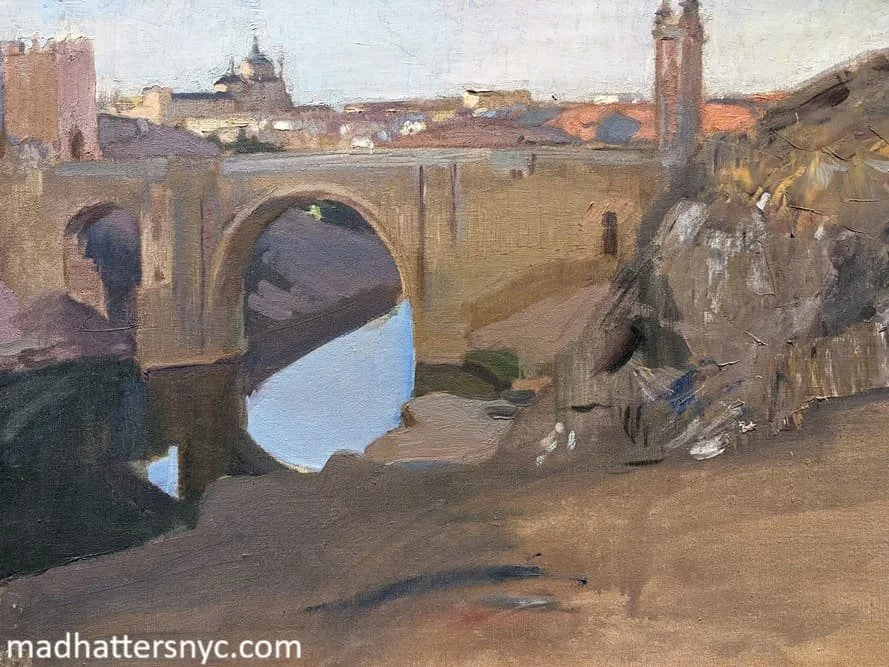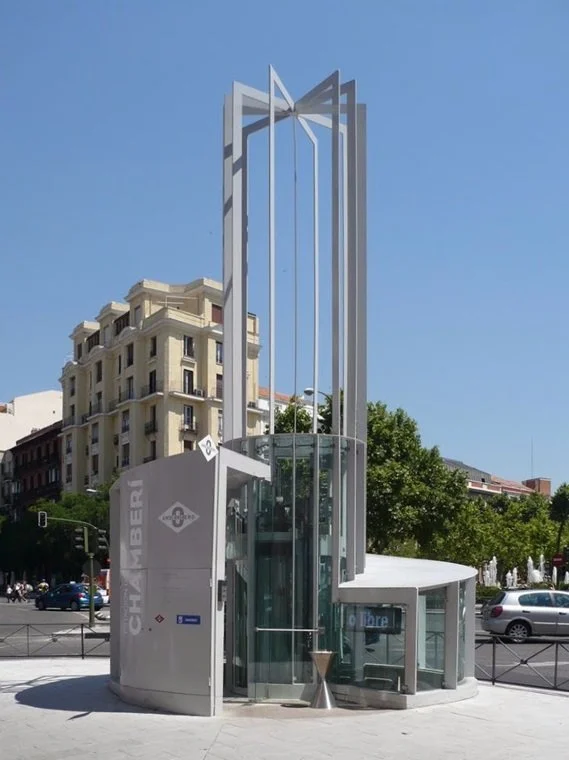Hidden Gems in Madrid: Exploring Off the Beaten Path in Chamberi
Madrid is one of the world's greatest art destinations. From the masterpieces of the Prado Museum to the avant-garde works of the Reina Sofia, Madrid's cultural landscape is a testament to centuries of artistic brilliance. Even though I spent a lot of time at Madrid’s Art Walk, one of my favorite days was spent exploring the city’s hidden gems in the sleepy neighborhood of Chamberi. If you’re looking for a quiet day off the beaten path, the streets of Chamberi are the perfect place to start.
Where is Chamberi?
Madrid’s Chamberi district is a tranquil barrio that almost feels completely removed from the bustling city center. Characterized by its tree-lined plazas and elegant architecture, Chamberi offers a delightful escape from the frenetic energy of the city’s hip barrios. When I visited, I was struck by the mix of residents and commuters on the streets going about their daily lives, which reminded me of my favorite neighborhoods in New York City like the Lower East Side and Astoria.
How to Get to Chamberi
Metro
One of the easiest ways to reach Chamberi is by taking the Madrid Metro. Chamberi is served by several metro stations on most of the major lines, including Iglesia (Line 1), Alonso Martinez (Lines 4, 5 and 10), and Quevedo (Line 2). Depending on your starting point in central Madrid, you can take the appropriate metro line to one of these stations, which will bring you to Chamberi in a matter of minutes.
Taxi or Ride-Sharing
Taxis and ride-sharing services like Uber are widely available in central Madrid and offer a convenient door-to-door option for reaching Chamberi.
Walking or Cycling
Depending on your location in central Madrid and your preference for exploration, walking or cycling to Chamberi can be a pleasant and enjoyable option. Located just north of the hip barrios of Malasaña and Chueca, Chamberi itself is also relatively compact and easily navigable on foot or by bike, allowing you to take in the sights and sounds of the city along the way.
Must-Visit Spots in Chamberi
These destinations are some of Madrid’s true gems, and are worth a standalone visit or combined into a fun day excursion to Chamberi and its surrounds.
Open Air Sculpture Museum of La Castellana
Mediterránea by Martín Chirino
Under and around the Eduardo Dato Bridge, just a stone’s throw from the Ruben Dario metro station, lies the Museo de Escultura al Aire Libre de la Castellana, or the Open Air Sculpture Museum of La Castellana. The outdoor art gallery features a collection of contemporary sculptures from a shockingly impressive array of artists. Originally conceived as an urban development initiative in the 1970s, the aim was twofold: to enhance the cultural landscape of the city and to provide a platform for contemporary artists to display their works in a public space accessible to all.
Estructuración hiperpoliédrica del espacio by Rafael Leoz
Madrid's city government collaborated with prominent Spanish artists of the time, so you’ll find works by such giants as Joan Miró, Pablo Serrano and Eduardo Chillida. We first encountered Chillida’s works in his home of San Sebastian, where his Wind Comb sculpture is still one of the Basque city’s most famous icons. I’m a fan of integrating art within a city, which makes it infinitely more equitable and accessible. The Open Air Sculpture Museum is free to visit and open 24/7.
Pro Tip: As I was making my way around, I couldn’t resist wandering into Green, an Art Deco dance club by night and a restaurant by day. I sauntered up to the bar and ordered a cup of coffee, but decided to use the facilities before I left, and I’m so glad I did. The bathroom is perfectly deco-licious, with an infinity mirror that begs for a photo.
Lázaro Galdiano Museum
Lázaro Galdiano Museum garden and mansion
It wouldn’t be a stretch to say I planned my trip to Madrid around visiting the Prado, since it’s home to so many of the famous artworks I longed to see in person. But with its vast works and massive crowds, the Prado can be overwhelming. In fact, I purchased Spain’s Annual Membership Card for National Museums (approximately €36, available at any participating museum) so I could visit the Prado multiple times and enjoy it in smaller doses. The Lázaro Galdiano Museum offers an entirely contrasting experience. Although its collection features many of the same famous artists you’ll find in the Prado, you can enjoy them in the intimate rooms of an Italianate mansion with significantly fewer fellow visitors.
Incredible painted ceilings at Lázaro Galdiano Museum
José Lázaro Galdiano amassed considerable wealth through his successful business ventures, which included investments in banking, mining, and industry, but his passion for art and culture truly defined his legacy. From a young age, he demonstrated a keen interest in collecting rare books, manuscripts, and works of art, amassing an eclectic collection of over 13,000 pieces. He was a dedicated patron of the arts, supporting artists, writers, and scholars through his philanthropic endeavors.
Witches' Sabbath by Francisco Goya
In 1947, Lázaro Galdiano fulfilled a lifelong dream by establishing a charitable foundation dedicated to the promotion of art, culture, and education. As part of his philanthropic vision, he bequeathed his entire art collection, library, and personal archives to the foundation, along with the stately mansion in Madrid that would serve as its headquarters. Highlights of the museum's collection include works by El Greco, Goya, Velázquez, and Bosch, alongside lesser-known gems that offer intriguing insights into the artistic trends and cultural movements of their time.
Sorolla Museum
Entrance to Sorolla Museum
Joaquín Sorolla was born in Valencia in 1863, and started his formal art education at the age of fifteen. Though his early work was influenced by the realism and social consciousness of the Spanish school, his encounter with the works of French Impressionists during a trip to Paris in 1885 had a profound impact on his artistic style. Sorolla became renowned for his mastery of light and color, capturing the essence of Spanish landscapes, seascapes, and everyday life with a luminous touch.
Mother by Joaquin Sorolla
Some of my favorite museums devote themselves to singular subjects, like the National Museum of Azulejo in Lisbon. Others transform the space into an immersive experience, like HC Andersen House in Odense. The Sorolla Museum is a perfect blend of the two. Located in the artist’s former home, you get to see how Sorolla lived and worked. Portraits of his family grace the walls like they would in any home, while brushes occupy blue and white ceramic jars in his studio.
View of Toledo by Joaquin Sorolla
View of the Tagus by Joaquin Sorolla
I particularly enjoyed Sorolla’s “Vision of Spain” series, which was commissioned by the Hispanic Society of America, one of our favorite small museums in NYC. He traveled across the country between 1912 and 1919, producing dreamy landscapes that stoke wanderlust. His landscapes perfectly took me back to my two perfect days in Toledo, while his views of Alhambra reminded me of the awe I experienced when I first visited.
Sorolla Museum’s enchanting garden
An added bonus is the museum’s serene garden oasis, where lush greenery and fragrant blooms provide a tranquil respite from the hustle and bustle of the city. Designed by Sorolla himself as an outdoor studio and sanctuary, the garden is the subject of his final painting in 1920, which is also featured in the museum. The artist suffered a stroke shortly after its completion and passed away 3 years later.
Madrid Metro Museum by Andén 0
Located beneath the bustling streets of Madrid lies a hidden gem that offers a unique glimpse into the city's rich transportation heritage—the Madrid Metro Museum by the Andén 0 project. Antonio Palacios was a pioneering Spanish architect who played a central role in the design and construction of Madrid's first underground railway network. His innovative use of materials, such as ceramic tiles and wrought iron, helped to define the distinctive aesthetic of the metro system.
The Chamberi station was one of eight on the first line when the Metro first opened in 1919. But in the 1960s, the city’s transportation network decided to lengthen its trains, and when they determined the station could not be expanded to accommodate the new trains, it was decommissioned in 1966.
The museum features a curated collection of artifacts, photographs, and interactive displays that tell the story of Madrid's metro system. From vintage subway maps and ticket booths to original signage and advertisements, the museum offers a comprehensive overview of the evolution of urban transportation in Madrid, highlighting the technological innovations, social developments, and cultural trends that have shaped the city's subway network over the years.
Pro Tip: The museum is only open Friday to Sunday and is free to visit, but booking tickets online can help you avoid a long wait. A 30-minute guided tour is offered in Spanish, but information is available in English upon request.
Eating in Chamberi
In 2019, CN Traveller declared that Chamberi was Madrid’s “coolest foodie neighborhood”. Sala de Despiece is an elevated tapas bar famous enough to be featured in Netflix’s "Somebody Feed Phil" and on the list of World’s Best 50 Restaurants. Its fame has drawn other quality eateries to the area, turning Calle Ponzano into a dining destination. For something a little more old-school, try Bodega de la Ardosa. Founded in 1892, the historic tavern is famous for its vermouth on tap, homemade croquettes, and classic Spanish tortilla. Its nostalgic ambiance and friendly atmosphere make it a favorite among locals and visitors alike.
Tucked away in Chamberi's Mercado de la Paz, Casa Dani is renowned for its authentic Spanish omelets, made-to-order with fresh eggs and potatoes. It's the perfect spot for a quick bite or a leisurely lunch. For something truly new and exciting, you could try Bugao Madrid, a Michelin Guide pick, which features cuisine from the Spanish enclave of Ceuta, an autonomous city of Spain on the North African coast. Bordered by Morocco, it lies along the boundary between the Mediterranean Sea and the Atlantic Ocean. Chef Hugo Ruiz loves featuring fresh market ingredients and fish from the Straits of Gibraltar.
Regardless of what you’re in the mood for, you’re bound to find something to please the palate during your Chamberi adventure.
Conclusion
While Madrid offers a plethora of iconic landmarks and bustling attractions, there's something truly special about venturing off the beaten path. So, the next time you find yourself in Madrid, take a detour to Chamberi and discover the charm, history, and culture that await around every corner. Whether you're a seasoned traveler or a first-time visitor, Chamberi promises to captivate your imagination and leave you with memories to cherish for a lifetime.















